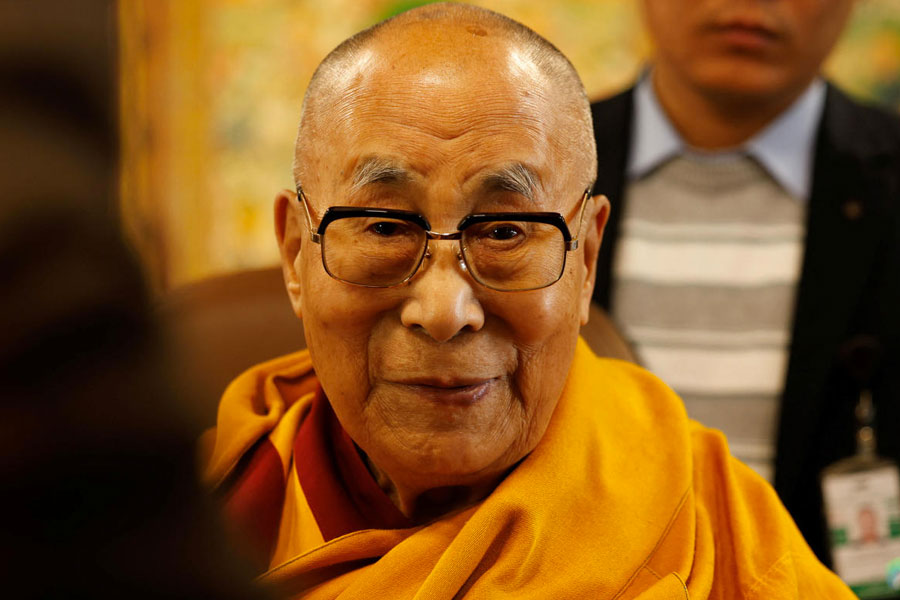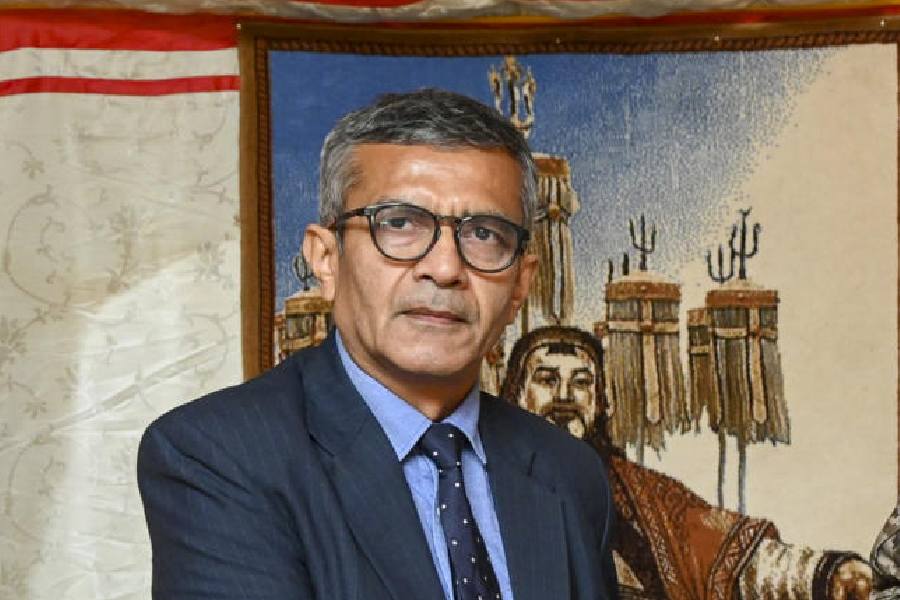 |
| A Jamdani sari being draped around actress Indrani Halder at an exhibition. File picture |
New Delhi, Nov. 30: Bangladesh is planning to contest India’s claim on Jamdani saris, Fazli mangoes and hand-stitched kanthas as its own, underscoring a dispute familiar to countries sharing borders and cultures.
“We recently found out that India has registered these items as its own. We are drafting a law, after which we will contest India’s claim,” said Tarana Halim, MP and a member of a Bangladeshi parliamentary delegation invited by Ficci.
Bangladesh does not have a geographical indicator (GI) law, under which a country stakes claim to products that are inextricably identified with a particular place or region. Countries with the law — India has one — have to register such products domestically and then file an application with the World International Property Organisation in Geneva.
India has moved for registering geographical indicators on Uppada Jamdani, a weave associated with Andhra Pradesh, Fazli mangoes grown in Bengal’s Malda and nakshi kantha or hand-stitched quilts made in rural Bengal.
However, Dhaka weavers too make Jamdani saris while two Bangladeshi districts close to Malda, Rajshahi and Dinajpur, grow the mango variety. Kanthas are also stitched in Bangladesh.
Bangladeshi NGOs working with rural craftsmen and some parliamentarians have staged demonstrations. “India could command a premium price for these handicrafts, though they are originally from Bangladesh,” said Halim, who is also a lawyer.
Indian commerce ministry officials said that many products were grown or manufactured on both sides of the borders, not just with Bangladesh but also with Pakistan.
“The path is open for Bangladesh to take a GI for Dhakai Jamdani or muslin… we are not against it. Our Jamdani registration is for a variety crafted only in Andhra Pradesh, not even in Bengal,” an official said.
“Similarly, if they have an indigenous variety of fruit which they feel is grown on both sides, they can seek a joint registration. We have done that in the case of Basmati with Pakistan,” the official added.
The main battle is, however, over the Jamdani saris, which command a premium. “Arab, Chinese and Italian traders had given detailed accounts of this fabric coming from what is now Bangladesh,” Halim said.
The word “Jamdani” traces its roots to Persian and literally means a cup atop a flower vase. The name reflects the floral design unique to the saris which was probably copied in medieval times from Persian design, according to fashion historian Ashish Bannerjee.
Indian craftsmen working in villages near Mughal subaltern courts eventually evolved local Jamdani designs on both muslin and cotton in various parts of the country — with the Dhaka and Murshidabad muslin (ultra-fine mulberry silk) Jamdanis among the more famous ones.
The Andhra version catered to the Nizam’s court in Hyderabad. The Dhaka variety’s most famous design is the “Panna Hazaar”, where the floral pattern and gold-and-silver thread give the impression that a thousand emeralds are twinkling.
Dhaka-style Jamdani is largely woven in Bengal by those who migrated from East Pakistan.










